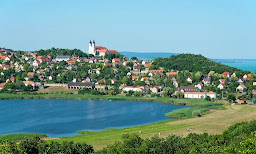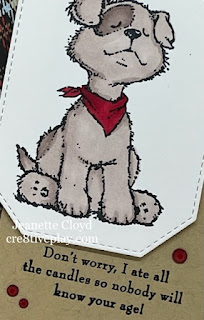I started a 50-week series in 2019 that I called Travel the World. Each week of the series I visited a randomly-selected country, sharing bits of information about that country. I then chose one tidbit of information about that week's country as inspiration for a card. As I explored those 50 countries in 2019, I knew I would continue on until I've visited every one of the 195 countries in the world. By the end of 2021, I'd virtually traveled to 145 countries and plan to complete my journey to all 195 countries by visiting the last 50 this year.
This week's country is...
Estonia
Located in Northern Europe, Estonia's three bordering countries are Latvia, Russia, and Finland.
Estonia is about twice the size of New Jersey.
The Estonian language is one of the hardest to learn for a native English speaker.
Estonia is among the least densely populated countries in Europe.
The country’s nickname is e-Estonia. It refers to Estonia‘s advanced digitisation and innovative digital solutions.
Estonians can vote from the sauna. Or a hot tub. Or the forest. For Estonians, almost all public services are available online. Their digital ID-Card allows them to do everything online, with the exception of getting married, getting divorced, or buying and selling a property.
Estonia has 2222 islands. Only twenty two of the islands are inhabited year round.
Over 50% of Estonian land is covered in forest.
Estonia’s national pastime is foraging. Everyone is allowed to pick and eat whatever they find in government-owned forests.
Estonia is home to one of the world’s most poisonous mushrooms, the white and green death cap, which resembles several edible mushrooms.
Walking through the forests of Saaremaa and Hiiumaa, visitors will often come upon abandoned Soviet military buildings such as bunkers and watchtowers. Many of these defense structures played a role in the fighting between the German and Soviet armies during World War II.
Estonia boasts some of the cleanest air in the world.
Estonia sees millions of migratory birds. At least 380 species of birds are spotted in Estonia annually. The bird watching season begins in early March in the country.
The tallest mountain–Suur Munamägi–in the country is just about 1000 ft in height.
Estonia has singing sand. It's a strange phenomenon that happens when you step in the sand on the islands of Hiiumaa and Saaremaa, which sound like a violin playing.
An oak tree in the middle of a football (American's call it soccer) field in Estonia won European Tree of the Year in 2015, taking in nearly 60,000 votes. That’s a whopping 32% of votes cast. Estonia holds the largest collection of folk songs in the world - over 133,000.
The Song Festival, held every five years in Tallinn Estonia, is famous for the highest number of choral singers on stage at once. All together 34,000 people turn up to sing, up to 18,000 people can be on stage at the same time and over 200, 000 people attend the event. That’s nearly 1/6 of the entire population!
Wife carrying is a sport in Estonia. As the name suggests, husbands pick up their wives and race several hundred metres with their better (and clearly wiser) halves upside down on their backs, with her legs over his neck and shoulders. The track must have two dry obstacles and a one-metre deep water obstacle. And, here’s the kicker – the ‘wife’ carried must indeed be your own, or a neighbour’s, and at least 17 years old.Marriage is not that big of a thing for Estonians. Not only have marriages declined in absolute numbers, but Estonians also marry later in life. Many Estonians raise their children as partners, without intending to get married at all.
Public transportation in Estonia's capital city is free for the registered residents of the city, however, everyone else must pay to use it.
It is a law in Estonia to have safety reflectors attached whether you are walking or biking during the night time or when the visibility is inadequate. The reflector can be pinned to your handbag, coat or any other suitable place where it is easily spottable.
It is possible to travel on ice roads in Estonia during winters. Ice roads are formed between the mainland and the islands when the Baltic Sea freezes during winters.Lake Peipsi is Estonia’s largest lake and Europe’s fourth largest freshwater lake.
Estonia is considered one of the “least religious” countries in the world, according to a 2011 poll, where only 29% of the population declared that religion was an important part in their daily lives.
Visitors to the country are likely to sight wolves, lynxes and brown bears.
Estonia is home to around 900 bears, 200 wolves, 200 lynx, and 12.000 moose.
The most common large mammal in Estonia is the roe deer numbering more than 100.000 animals.
The national animal of Estonia is the grey wolf, the national flower the blue cornflower and the national bird the barn swallow.
Business cards are pinned on the wall of the airport in Tallinn. You can stick your own business card on the wall and pick the one that is of interest to you. It’s a great way to network with people and find useful stuff.
Café culture is quite popular in the country. Cafes can be found in almost every corner and street across the country. The cafes in the country are small, cozy and provide a home-like feeling to its customers.
The Estonians invented Kiiking, which is considered a sport. It involves fastening yourself to an enormous standing steal swing (kiik means swing in Estonian) which has a full 360 degrees of rotation to it. To swing a kiiker the contestant must pump by squatting and standing up on the swing. The swing gains momentum taking the person in full circle by his skillful pumping.Estonia has a literacy rate of 99.8%, which makes it rank second in the world for that matter.
Estonians top the world average of the number of books people own. On average, Estonians own 218 books per household and 35% of respondents own 350 books or more.
Every country has its own share of Christmas customs, some of which may seem a little strange to foreigners, and Estonia is no exception. Instead of leaving milk and cookies out for Father Christmas, Estonian children leave slippers on the window sill for the elves, who will, in return leave sweets in the morning.
A common tradition on New Year’s Eve is õnne valamine or the ‘pouring of luck’. Lead is melted over a stove in a metal ladle and then poured quickly, or slowly into ice cold water. What appears are interesting lead figures, which can then tell you your fortune for the upcoming year.
The wolf is one of the most popular animals in Estonian folklore; there are over 500 names and stories about this animal. So, it’s only appropriate that the wolf was chosen as Estonia’s national animal this year.
Aside from spring, summer, autumn, and winter, Soomaa National Park in the southwest of the country has a fifth season. Every year after snowmelt or heavy rainfalls, the landscape is completely flooded. Canoes become the only means of transportation during that time.Estonia is the birthplace of Skype and hotmail.
Estonians are not known as great conversationalists. At first, they can seem a bit reserved or even grumpy as they are not fond of over-sharing information. However, with some time, Estonians open up and develop into engaged conversationalists. The best chances to see this happen are in a sauna or at a campfire.
Estonians love saunas.
In Tartu, visitors can experience the most immersive Estonian sauna experience: Staying on a sauna boat overnight and jumping in the Emajõgi river to cool down.Estonia’s first spa, providing mud treatments, was founded in Kuressaare in 1840. There is now one spa for every ten residents in the town.
Estonians don‘t exaggerate. Compared to other cultures, Estonian‘s are very matter-of-fact and down-to-earth. They are known to describe things as they are instead of using superlatives for everything.
When Estonians express that something is good, they instead use the word “normal”.
Estonians celebrate their independence twice a year. Once on the 24th of February and the other on the 20th of August.
Some say that Tallinn‘s St Olaf‘s Church was once the tallest building in the world. However, as it lacked a lightning arrester, it was repeatedly struck by lightning which caused damage in the form of fires.
The world’s first underwater draughts tournament was held in January 2011 in Valtu, near the Estonian town of Rapla. The event was attended by 52 Estonian divers and made it into the Guinness Book of Records.One of the biggest meteorites to hit the Earth in the recent history landed in Saaremaa island, in what today is the village of Kaali.
The first meal consumed in space was prepared in Estonia. A factory in Põltsamaa became the caterer to the Soviet space programme in 1962 and started packaging ready-made food into tin tubes, the only available means at the time.
Marzipan is one of the oldest sweets made in Estonia, first used as a medicine as it was thought to have healing properties.
Estonia has the largest number of museums per person in the world, at one museum for every 5,300 Estonians. On average, Estonians visit a museum twice a year.
The Tallinn Zoo has the world’s largest selection of rare chamois and wild sheep.
Estonia is Europe’s largest exporter of wooden houses.
My inspiration for this week's card is based on this fact about Estonia... Ninety-nine percent of Estonians have blue eyes.
Her blue eyes don't show up well in the photo, but she does have blue eyes.
Thanks for stopping by my blog today!
Stamp Set: Penny Black Saying a Latte stamped with Memento Tuxedo Black Ink and colored with Copic MarkersPaper: Accent Opaque 120# White and SU Pacific Point and Poppy Parade CS and DP from my scrap file
Dies: Gina K Master Layouts 2, MFT Stitched Rectangles, and Paper Roses Stitched Circles
Embellishments: This Calls for Confetti Turquoise






































































